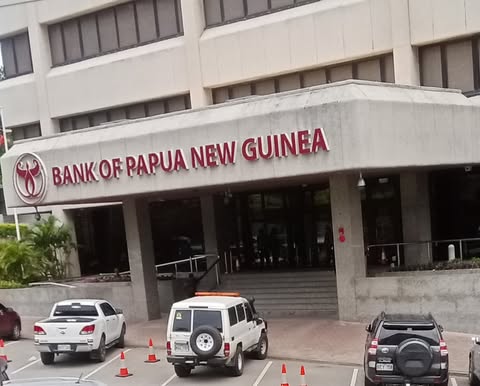The Papua New Guinea (PNG) economy is expected to further improve in 2025 driven by strong activity in the mineral and non-mineral sectors and higher government spending.
Bank of Papua New Guinea (BPNG) said this will also be supported by projected growth in the global economy of 3.3 percent mainly driven by expected expansion in most advanced economies, according to the International Monetary Fund’s (IMF) January 2025 World Economic Outlook (WEO) report.
“This is expected to increase demand for PNG’s export commodities. Global growth is projected to remain around 3.3 percent in 2026. The Bank projects real GDP to grow by 4.0 percent in 2025, following an estimated 3.0 percent growth rate in 2024, mainly driven by higher production in the mineral and the Agriculture/Fisheries/Forestry (AFF) sectors.
The increase in production in the mineral sector is due to operational improvements, high ore grades, and expansion of processing plants of existing mines. In addition, production capacity of the Porgera gold mine is expected to reach 60 percent with fewer disruptions, from 45 percent in 2024. The PNG LNG Project is expected to increase production, reflecting improvements in production capacity. Moreover, the early works for the Papua LNG Project is anticipated to scale-up as it moves towards the Final Investment Decision (FID) in the last quarter of 2025,” BPNG said.
BPNG added that in the AFF sector, higher production of coffee, palm oil, cocoa, copra oil, tea, rubber, logs, and fisheries are further expected to support the growth.
“Although international prices of most of PNG’s export commodities are expected to moderate in 2025, the depreciation of the kina should increase the value of export earnings in kina terms, creating incentives to boost production. Additionally, increased activities in the non-mineral sector including the finance and insurance sectors, information and communication, construction, transportation, and accommodation and food services are also expected to contribute positively to the growth in 2025,” BPNG said.
The PNG Central Bank said these will be supported by higher government spending on essential services and infrastructure projects, improvements in the foreign exchange market, and the stability in the energy (fuel) supply.
“Over the medium term, the Bank projects the economy to grow at around 5.0 to 6.0 percent, supported by near-full production capacity at Porgera gold mine and growth in the non-mineral sector, combined with government spending, and the expected commencement of construction of the Papua LNG project in 2026.
The agricultural sector is expected to grow strongly, driven by higher production of palm oil from new and existing plantations, and cocoa and coffee by smallholders. The favorable international prices for PNG’s agricultural exports combined with the exchange rate reform through the depreciation of the kina is benefiting the sector.
Therefore, to complement this reform, it is important that the Government considers re-establishing the rural-based Agriculture Extension Services to assist farmers to increase production,” BPNG said.
BPNG said additionally, Government’s investments in infrastructure, and improved market accessibility will help lower costs, support production and promote downstream processing.
“Downside risks to the growth forecasts for 2025 and the medium term would stem from a slowdown in the world economy, fall in commodity prices, natural disasters, geopolitical tensions, and prolonged disruptions to Porgera gold mine. The main upside risk to these projections would be higher than expected activity relating to the construction phase of Papua LNG project and other resource projects,” BPNG added.


1 Comment
Pingback: dlvr.it